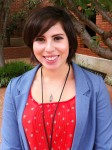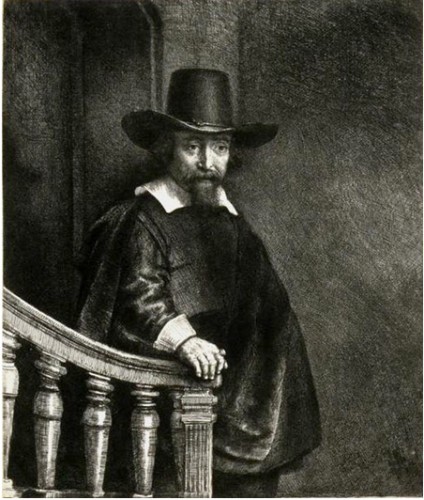Health, Healing, History: New Thoughts on Jews and Medicine

 A blog post by Exhibitions Intern Meryl Feinstein.
A blog post by Exhibitions Intern Meryl Feinstein.
As the sole exhibitions intern currently on staff at the JMM, I have had the exciting opportunity to fully delve into the initial workings of exhibition development. Along with curator Karen Falk, I have been exploring the “big ideas” for an exhibition regarding Jews and the medical profession in Maryland.
When first approaching the topic, we mainly looked at Maryland Jews who had contributed to the medical field (largely from Hopkins and Sinai Hospital) and Jewish-founded institutions in the Baltimore area. For me, aside from the stereotype of “My son the doctor,” I didn’t think there was a deeply Jewish connection to the medical profession. Many of today’s Jewish doctors see themselves as doctors who just happen to be Jewish. American modern medicine is a profoundly Western concept – of a scientific foundation – not one inherently religious or cultural per se… Right? This line of thought guided the direction of the exhibition for the past few weeks. We saw the Jewish facet as a case study; that is to say, we were going to look at the development of modern medicine through the lens of Jewish people and institutions in Maryland and the achievements that followed. This would include a wide array of professionals: doctors, nurses, pharmacists, psychiatrists, etc.
With this mindset, Karen and I took a short daytrip to New York City to see the Yeshiva University Museum’s current exhibition, Trail of the Magic Bullet: The Jewish Encounter with Modern Medicine, 1860-1960 at the Center for Jewish History. Trail of the Magic Bullet was not limited to the achievements and institutions of Maryland; thus, the exhibition’s main goal was to provide an image of the larger modern Jewish experience through the lens of the Jewish relationship with – and contribution to – modern medicine. Trail of the Magic Bullet began with a nod to the pre-modern history of Jewish physicians by way of a series of ancient manuscripts and one very lovely Rembrandt etching of the Jewish physician Ephraim Bonus. The majority of the show, however, was dedicated to highlighting specific Jewish personalities who made significant contributions to medical science in the modern era. Public health was also included, such as the Jewish Consumptives’ Relief Society, the Visiting Nurse Service, Hadassah, and the establishment of various Jewish hospitals. The exhibition concluded with a short video discussing current issues of medical ethics.



As I walked through Trail of the Magic Bullet, I was conflicted. The exhibition explored some truly intriguing and important themes and dichotomies: anti-Semitism vs. assimilation, Jewish particularism vs. universalism (or rather, serving the Jewish community vs. the global community), science vs. tradition. These themes are as wholly relevant to the Jews of Maryland as anywhere else in the Western world; we could easily adapt the YUM template for our purposes. Yet although the exhibition was informative and widely acclaimed – and closely related to our own ideas – I walked away feeling that the YU approach just wasn’t for us. I thought about the JMM’s demographic: how could we make this topic exciting and interactive, especially for school groups? And, on a more personal level, how could we make this exciting and interactive for me – that is to say, others like me – a young adult with little knowledge of science and medicine?
Karen and I seemed to share this opinion, and after a series of brainstorming sessions and exploring our collection, we kept circling back to the same idea: instead of talking about Jews and medicine, why don’t we talk about Jews and health? It may be a minor adjustment, but the word ‘health’ rings more inclusive, more positive in its connotation than the word ‘medicine.’ Furthermore, everyone engages with health. From the doctor’s office to yoga to alternative, holistic medicine to nutrition, optimal health is something we all constantly strive to attain and maintain. Health touches upon the physical, the mental, and the emotional – the body, the mind, and the soul. It’s personal, it’s communal, and it’s global. This small change could thereby attract a larger audience and more diverse demographic.
On a most basic level, the switch to ‘health’ allows us to explore the general cultural constructions of health and illness in America. Ultimately, however, the question remains: is there a Jewish meaning embedded within these cultural constructions? If so, what is it? If not, why not? The themes we are currently considering include the relationship between patient and healer, the communal response to caring for the sick and promoting wellness, the evolution of the connection between Jews and health/illness over time, and the meaning of “Jewish diseases.” We intend to approach these topics from a regional perspective.
Though there are still more questions than answers, it seems like we may be on to something. Right now I am starting at the source: Jewish text. This includes health-related passages in Biblical, Talmudic, and Rabbinic sources (especially Maimonides). These texts focus largely on healing – the root of health – and the relationship between the body and soul. To be healthy, the individual must maintain balance in all things physical and mental – extreme states are strongly discouraged – and moderation is key. When illness strikes, the physician acts as God’s helper, one whose duty is to encourage the natural course of healing to restore good health. One of the more amusing passages I have come across was written by Jedaiah ben Avraham Bedersi, or “HaP’nini,” a Medieval French poet and philosopher:
When you need a physician, esteem him a god;
When he has brought you out of danger, you consider him a king;
When you have been cured, he becomes human like yourself.
When he sends you the bill, you think him a devil.
It doesn’t look like much has changed!
